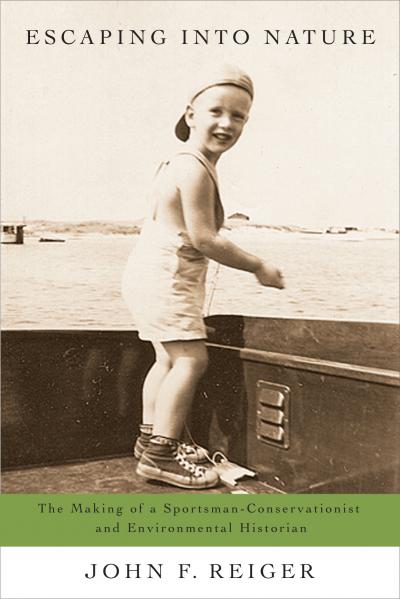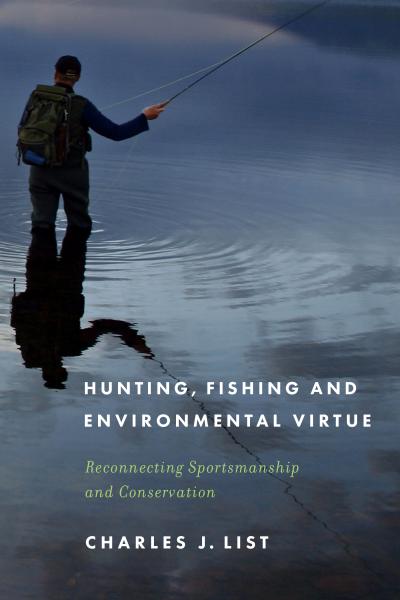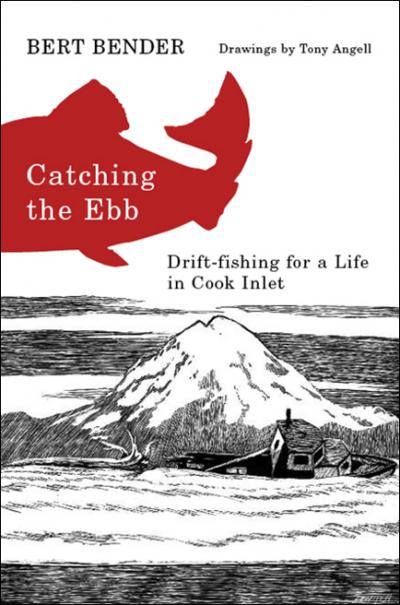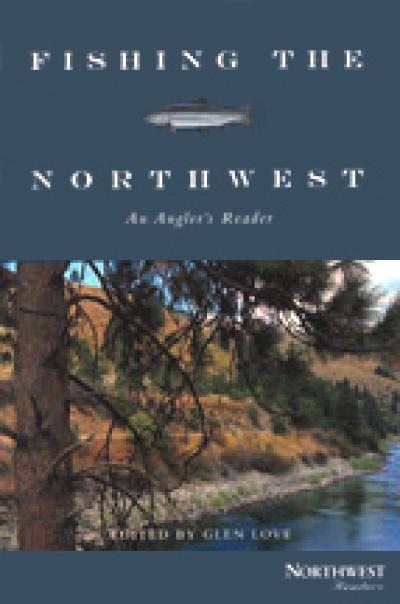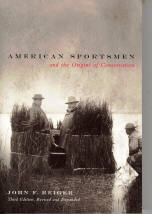
American Sportsmen and the Origins of Conservation
Third EditionJohn F. Reiger
Environmentalists who believe that hunters and anglers are interested only in the kill and the catch may be surprised to learn that sportsmen were originally in the vanguard of the conservation movement. John Reiger's work has been hailed as an authoritative look at these early conservationists; now his landmark book is available in an expanded edition that broadens its historic sweep.
Beginning in the 1870s, sportsmen across America formed hundreds of organizations that not only fostered responsibility for game habitats but also spearheaded the creation of national parks, forests, and wildlife refuges. Reiger tells how these "gentlemen" hunters and anglers, outdoor journals like Forest and Stream, and organizations such as the Boone and Crockett Club—founded by Theodore Roosevelt, George Bird Grinnell, and other prominent sportsmen—lobbied for laws regulating the taking of wildlife, and helped to arouse public interest in wilderness preservation.
In this new edition, Reiger traces the antecedents of the sportsmen's conservation movement to the years before the Civil War. He extends his coverage into the present by demonstrating how the nineteenth-century sportsman's code—with its demand for taking responsibility for the total environment—continues to be the cornerstone of the sporting ethic. A new Epilogue depicts leading environmental thinker Aldo Leopold as the best-known exponent of this hunter-conservationist ideal.
Praised as "one of the seminal works in conservation history" by historian Hal Rothman, Reiger's book continues to be essential reading for all concerned with how earlier Americans regarded the land, demonstrating even to those who oppose hunting that they share with sportsmen and sportswomen an awareness and appreciation of our fragile environment.
About the author
John F. Reiger is Professor Emeritus of History at Ohio University-Chillicothe and the former Executive Director of the Connecticut Audubon Society. His other books include The Passing of the Great West: Selected Papers of George Bird Grinnell and "Gifford Pinchot with Rod and Reel"/"Trading Places: From Historian to Environmental Activist"—Two Essays in Conservation History.
Read more about this author
Preface to the Third, Revised and Expanded, Edition
Introduction
1 Precursors of Conservation:
American Sportsmen Before the Civil War
2 Makers of Conservation:
American Sportsmen After the Civil War
3 Conservation Begins with Wildlife
4 The Early Fight for the Forests
5 Development of the National Park Concept
6 The Boone and Crockett Club
7 Establishment of a National Conservation Policy
Epilogue: Aldo Leopold and the Continuing Tradition
of the Sportsmen-Conservationist Ideal
A Picture Album of Sport and Conservation
Notes
Annotated Bibliography
Index
Ever since the first decade of the twentieth century, when President Theodore Roosevelt and his Chief Forester, Gifford Pinchot, made "conservation" a household word, the term has received a variety of definitions, and every group from the Sierra Club to the United State Army Corps of Engineers has claimed to be its one true representative. During the latter 1960s, the public discovered the word "ecology" and began to use it as if it were a more fashionable version of the older term. Though both words entered the American vocabulary in the late nineteenth century and are now used interchangeably, even by some historians,1 they have in reality very different meanings.
As a discipline, ecology is "the study of the interrelationships of organisms to one another and to the environment."2 Because this book deals with the nineteenth century, its human subjects cannot be called "ecologists." Even though many of them possessed an ecological orientation--perceiving the interrelatedness of wildlife and their habitats--they studied organisms (like birds) or environments (like forests), but rarely both simultaneously. Not until the twentieth century did ecology become a recognized science in the United States.
"Conservationists," not "ecologist," is the more precise term for the American pioneer of environmental concern. Long before 1907, when Gifford Pinchot claims to have been the first to perceive the interrelationship of all resource use, 3 an influential segment of the American population had come to understand that renewable resources like wildlife and forests could be utilized indefinitely as long as a certain amount of "capital" was maintained. Even nonrenewable resources like coal and oil could be made to last infinitely longer if managed on an efficient basis. Historically, conservation has not been a science like ecology, but a reform movement using political and legal methods to obtain what the Theodore Roosevelt administration called the "wise use" of resources.
The confusion between ecology and conservation is only one of many ambiguities surrounding the origins of American concern for the environment. There may, in fact, be no aspect of United States history more in need of revision than the historiography4 of conservation
One of the most important misconceptions is that no conservation movement existed until the twentieth century. Despite the publication of a number of books and essays purporting to treat the "origins" of the crusade, academic historians invariably begin their works at the close of the nineteenth century, with perhaps a passing nod to a few "prophets" like George Perkins Marsh and John Wesley Powell. Conversely, this volume commences several decades earlier, and shows that the movement originated in the 1870s. The work ends in 1901, when most historians of conservation are just "getting into" their studies. The first years of the twentieth century have been chosen as the closing period because with the ascendancy of Theodore Roosevelt to the Presidency, a movement that began a generation before flowered into a developed federal program of resource management.
Another widely believed myth of conservation historiography is the result of historians examining only the most available resources. Accepting at face value the political rhetoric of the Roosevelt administration, "the people" against the monopolistic control of resources by "special interests."5 According to this thesis, conservation was an integral part of the early twentieth-century reform movement known as "Progressivism."
The problems with this interpretation are immense. First is the fundamental question of whether there was really a Progressive movement at all, or simply a myriad of diverse reform efforts later consolidated by historians under one all-encompassing label.6 Even if we accept the existence of Progressivism as a unified movement, another impasse materializes when we try to bring conservation within its fold. Though historians of Progressivism and conservation have described them as undifferentiated "middle-class" causes, this study will show that conservation, at least, began as an effort of the upper classes. If this is true, then how could conservation simply be one component of the larger, Progressive, supposedly middle-class, phenomenon? Of course, if conservation is to be seen as a democratic movement of the people against economic elites, then one must conclude that its base was middle class, since that socioeconomic group presumably makes up the majority of Americans.
One historian who has challenged the simplistic interpretation of conservation as the fulfillment of democracy is Samuel P. Hays. In Conservation and the Gospel of Efficiency (1959), he shows that the goals of leading conservationists commonly clashed with "grass-roots" democratic impulses. More often than not, "the people," particularly in the West, opposed efforts aimed at keeping them from exploiting resources in the traditionally wasteful manner. While Hays thesis has received widespread acceptance by historians, the notion is set out to destroy is still firmly embedded in the popular mind. Perhaps part of the reason is that he insists, like those before him that conservation was a middle-class movement, despite the conspicuous roles played by upper-class individuals like Roosevelt and Pinchot.
There are, however, other, more significant, problems with the Hays interpretation. Though his book begins only with the last decade of the nineteenth-century, he argues that the conservation movement started as the result of efforts by a small corps of engineers and physiographic specialists in the federal government. He ignores all nongovernment conservation efforts before the 1890s, and wildlife, the first "resource" to galvanize conservationists into action, is barely even mentioned. During the Roosevelt Presidency, in the years from 1901 to 1909, a federal bureaucracy dealing with environmental issues emerged, and the engineers, geologists, and other "experts" Hays singles out were indeed important by that time but they were not the group that originated the movement in the 1870s.
American sportsmen, those who hunted and fished for pleasure rather than commerce or necessity, were the real vanguard of conservation. Long before the period Hays and other historians choose to begin their works, sportsmen had initiated an environmental movement composed of thousands across the country.
With the establishment in the early 1870s of national newspapers like American Sportsmen, Forest and Stream, and Field and Stream7 sport hunters and fishermen acquired a means of communicating with each other, and a rapid growth of group identity was the result. Increasingly, they looked upon themselves as members of a fraternity with a well-defined code of conduct and thinking. To obtain membership in this order of "true sportsmen," one had to practice proper etiquette in the field, give game a sporting chance, and possess an aesthetic appreciation of the whole environmental context of sport that included a commitment to its perpetuation.
The most obvious manifestation of this increasing self-awareness was the rapid growth of sportsmen's clubs and associations. While a desire for comradery was the underlying reason for their creation, one need only look at the names and constitutions of these organizations to understand that subjects like "game protection" and fish culture" were major concerns of the members.
This early emphasis on the preservation and management of wildlife contains key implications for the historiography of conservation. Accepting the opinions expressed by Roosevelt and Pinchot in their autobiographies, historians have concluded that concern for the forests was the genesis of American conservation. Yet this work will show that the first challenge to the myth of inexhaustibility8 that succeeded in arousing a substantial segment of the public was not the dwindling forest, but the disappearance, in region after region, of game fishes, birds, and mammals.
While in the beginning, sportsmen as a group concerned themselves more with wildlife than woodlands, individual hunters and fishermen were among the most important pioneers of American forestry. Giants of forest conservation like Bernhard E. Fernow, Joseph T. Rothrock, and Gifford Pinchot were sportsmen long before they began their efforts to have the United States adopt a program of scientific timber management.
Regardless of which of the three main areas of early conservation we pick--wildlife, timberlands, or national parks--sportsmen led the way. During the 1870s and 1880s, local and state associations forced one legislature after another to pass laws limiting and regulating the take of wildlife by market men and sportsmen alike. And in this same period, outdoor journals, particularly Forest and Stream, anticipated the later muckrakers in exposing the federal government's shameful neglect of Yellowstone National Park, the nation's first such preserve.
Finally, in 1887, Theodore Roosevelt, George Bird Grinnell, and other prominent sportsmen founded the Boone and Crockett Club, named after two of America's most famous hunters. Though almost ignored by academic historians, it, and not the Sierra Club, was the first private organization to deal effectively with conservation issues of national scope. The Boone and Crockett played an all-important role in the creation and administration of the first national parks, forest reserves, and wildlife refuges. In addition, "those Halcyon Days," as Roosevelt called the early Boone and Crockett period,9 were the formative years of his development as the future leader of the conservation movement. But before the reader can fully understand why Roosevelt, Grinnell, and other sportsmen acted as they did, we need to go back into the decades before the Civil War to examine the origins of their thinking.
"This splendid book is all meat and no fat… It must be read by everyone who has an interest in conservation. But it is more than just new information; it is also fascinating reading."
"An outstanding, well-written documentation of the contributions of sportsmen to the conservation movement. For the sport historian interested in obtaining a viewpoint that differs with the traditional studies of the past, the book is a must."

